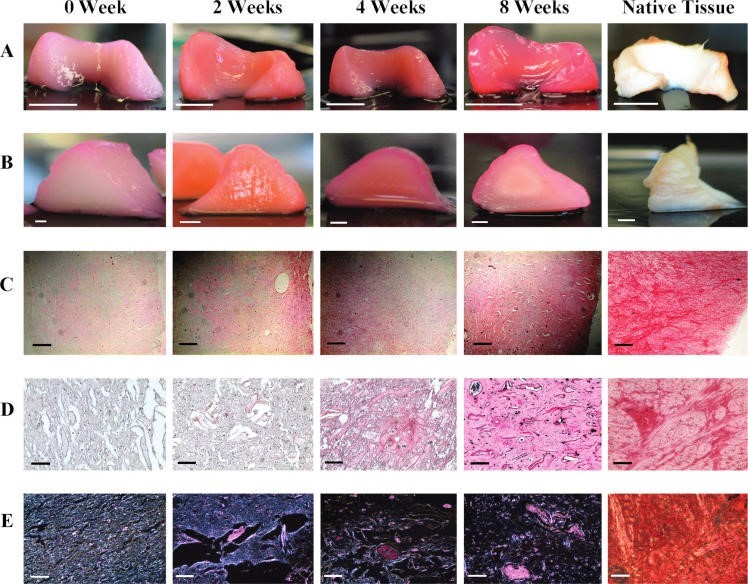This study demonstrates for the first time the development of engineered tissues based on anatomic geometries derived from widely used medical imaging modalities such as computed tomography (CT) and magnetic resonance imaging (MRI).
Computer-aided design and tissue injection molding techniques have demonstrated the ability to generate living implants of complex geometry. Due to its complex geometry, the meniscus of the knee was used as an example of this technique's capabilities. MRI and microcomputed tomography (micro-CT) were used to design custom-printed molds that enabled the generation of anatomically shaped constructs that retained shape throughout 8 weeks of culture.
Engineered constructs showed progressive tissue formation indicated by increases in extracellular matrix content and mechanical properties. The paradigm of interfacing tissue injection molding technology can be applied to other medical imaging techniques that render 3D models of anatomy, demonstrating the potential to apply the current technique to engineering of many tissues and organs.


.png)

